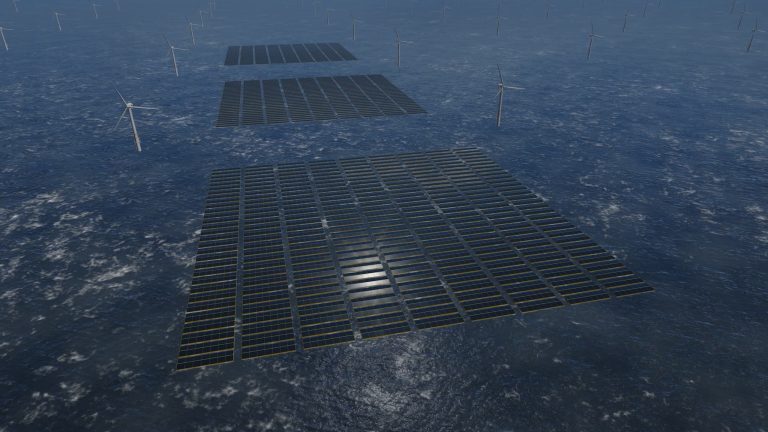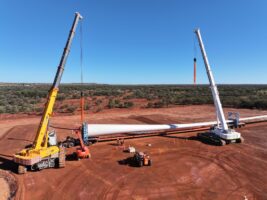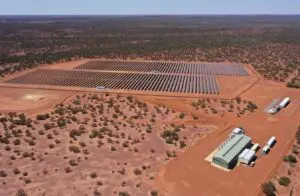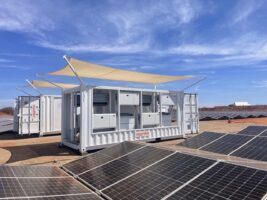Offshore solar pioneer Oceans of Energy is among a group of 16 European organisations that have partnered to scale up floating offshore solar technology to 150MW so that it can be more easily installed within existing and new offshore wind farms.
The European Union (EU) Joint Industry Project, announced on Monday by Oceans of Energy, plans to scale up offshore solar technology to standard formats of 150MW with the hopes of enabling the building of gigawatt-scale offshore energy farms.
“Placing solar farms within offshore wind farms makes better use of the sea space, increases energy output, provides more continuous power over the seasons, and will drive down costs for green electricity production and the energy system,” Oceans of Energy said in its press release.
Oceans of Energy has already set itself up as a leader in offshore solar, having built the world’s first offshore floating solar farm in the Dutch North Sea in 2019 – a ‘world first’ for the fact that its solar system is installed on the open ocean, not an inland reservoir or lake.
Since then, the company secured an ‘Approval in Principle’ from Bureau Veritas, a world leading testing, inspection, and certification company, for its offshore solar system, and in early 2023 announced that it had been awarded the contract to install and operate a floating solar system at the 759MW Hollandse Kust Noord offshore wind farm in the North Sea.
This contract is one of several Oceans of Energy has listed on its website.
Unlike more common floating solar projects that have increased in popularity and value in recent years, offshore solar must contend with rough seas and waves.
But with the potential of installing solar amidst the growing number of offshore wind farms comes the opportunity to make better use of sea space, provider more continuous power throughout the year, and further drive down costs for green electricity production.
In fact, Oceans of Energy highlights a number of additional value-adds for co-locating offshore solar with offshore wind farms, including the reduction of environmental impact per installed capacity thanks to a reduced need for anchors on the seabed and centralising the export cable in a larger floating island.
“The complementarity of energy patterns of a co-located offshore solar and wind farm allows the farm to use the same grid connection more efficiently, thus reducing the need for investments in expanding the energy system.
“In addition, the space needed, both on land and at sea, for generating renewable energy can be drastically reduced by using the offshore wind farm space for solar as well.
“Offshore solar is becoming a major contributor to the energy transition in the North Sea,” said Allard van Hoeken, founder and CEO of Oceans of Energy.
“We are kickstarting the development of a standardized offshore solar building block, which fits right in-between four offshore wind turbines. This allows for optimized multi-source offshore energy farms without competing for scarce and limited land space.”
The newly announced EU Joint Industry Project – named BAMBOO (Build scAlable Modular Bamboo-inspired Offshore sOlar systems) – aims to resolve existing challenges to the rollout of large-scale offshore solar into new and existing wind farms, including demonstrating the robustness and performance of the solar panels in offshore conditions.
Prime amongst the Project’s goals is attracting funds for the development of a 100-200MW offshore solar farm at a Vattenfall offshore wind farm before the end of the decade.
Vattenfall, a Swedish power company, is one of the sixteen organisations joining the EU Joint Industry Project, alongside Oceans of Energy, Italian marine, energy certification and engineering firm RINA, technology developer Solarge, and testing facility Fraunhofer CSP.










